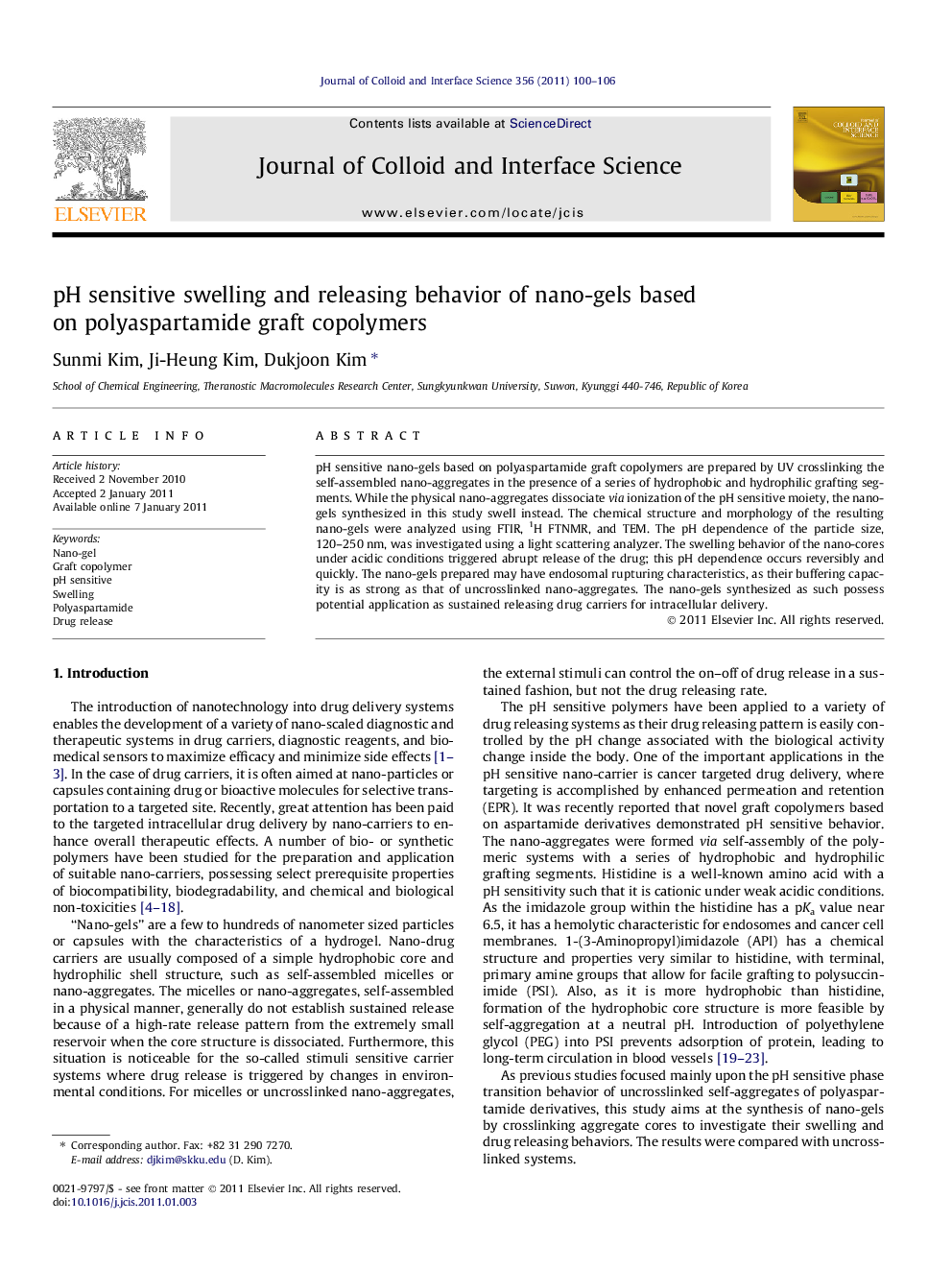| Article ID | Journal | Published Year | Pages | File Type |
|---|---|---|---|---|
| 608708 | Journal of Colloid and Interface Science | 2011 | 7 Pages |
pH sensitive nano-gels based on polyaspartamide graft copolymers are prepared by UV crosslinking the self-assembled nano-aggregates in the presence of a series of hydrophobic and hydrophilic grafting segments. While the physical nano-aggregates dissociate via ionization of the pH sensitive moiety, the nano-gels synthesized in this study swell instead. The chemical structure and morphology of the resulting nano-gels were analyzed using FTIR, 1H FTNMR, and TEM. The pH dependence of the particle size, 120–250 nm, was investigated using a light scattering analyzer. The swelling behavior of the nano-cores under acidic conditions triggered abrupt release of the drug; this pH dependence occurs reversibly and quickly. The nano-gels prepared may have endosomal rupturing characteristics, as their buffering capacity is as strong as that of uncrosslinked nano-aggregates. The nano-gels synthesized as such possess potential application as sustained releasing drug carriers for intracellular delivery.
Graphical abstractSynthesis of nano-gel by crosslinking of inner cores via UV radiation and its reversible pH sensitive swelling/deswelling behavior in aqueous medium.Figure optionsDownload full-size imageDownload high-quality image (96 K)Download as PowerPoint slideResearch highlights► pH sensitive nano-gels are prepared from C18/MPEG/API/MA-g-PASPAM synthesized. ► The nano-gels prepared are biocompatible, biodegradable, and highly pH sensitive. ► Nano-gels has a buffering effect within a pH 5–7 range by ionization of API. ► Nano-gels shows reversible and fast swelling and deswelling behavior around pH 6.7 ► Nano-gels shows sustained drug release pattern.
